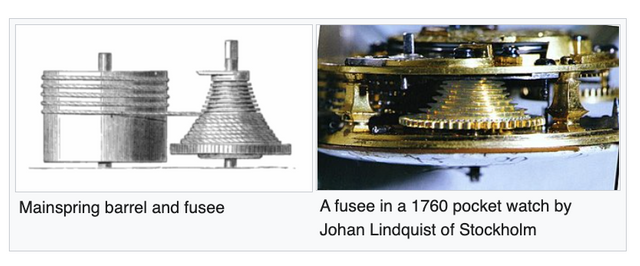
A fusee (from the French fusée, wire wound around a spindle) is a cone-shaped pulley with a helical groove around it, wound with a cord or chain attached to the mainspring barrel of antique mechanical watches and clocks.
Used from the 15th century to the early 20th century to improve timekeeping by equalizing the uneven pull of the mainspring as it ran down. Gawaine Baillie stated of the fusee, "Perhaps no problem in mechanics has ever been solved so simply and so perfectly."
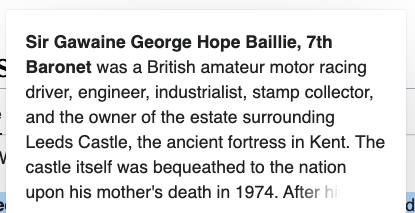
Check out this drawing with a fusee from Leonardo da Vinci around 1490.
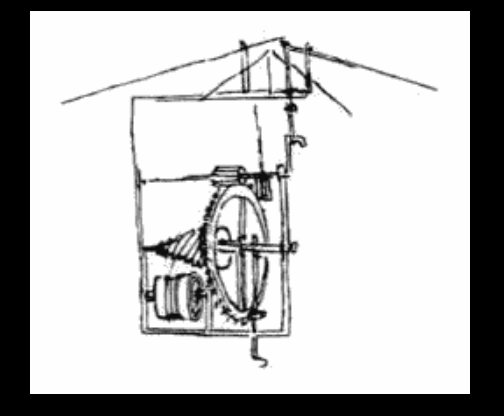
How the first fusee came on the scene is not known.
Many think it was clockmaker Jacob Zech of Prague who created it somewhere around 1525.
The earliest definitely dated fusee clock was made by Zech in 1525, but the fusee actually appeared earlier, with the first spring driven clocks in the 15th century.
The idea probably did not originate with clockmakers, since the earliest known example is in a crossbow windlass shown in a 1405 military manuscript.
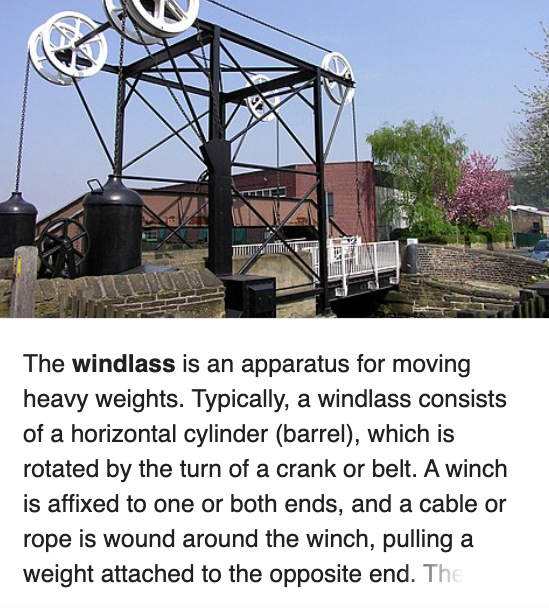
Drawings from the 15th century by Filippo Brunelleschi and Leonardo da Vinci show fusees.
The earliest existing clock with a fusee, also the earliest spring-powered clock, is the Burgunderuhr (Burgundy clock), a chamber clock whose iconography suggests that it was made for Phillipe the Good, Duke of Burgundy about 1430, and preserved in the Germanisches Nationalmuseum.
The word fusee comes from the French fusée and late Latin fusata, 'spindle full of thread'.
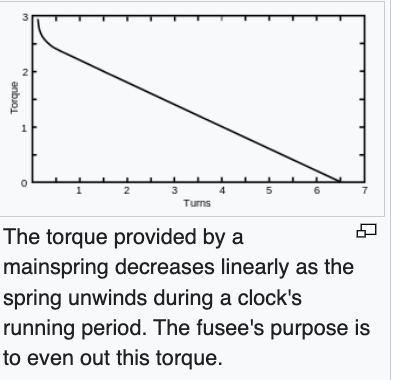
Springs were first employed to power clocks in the 15th century, to make them smaller and portable.
These early spring-driven clocks were much less accurate than weight-driven clocks.
Unlike a weight on a cord, which exerts a constant force to turn the clock's wheels,
the force a spring exerts diminishes as the spring unwinds.
The primitive verge and foliot timekeeping mechanism, used in all early clocks, was sensitive to changes in drive force.
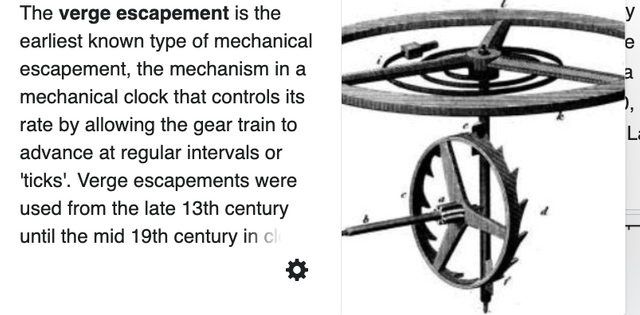
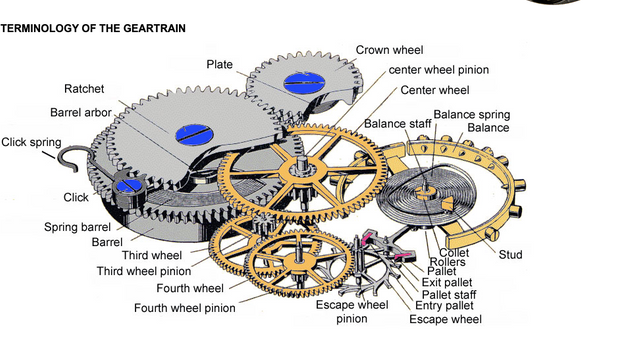
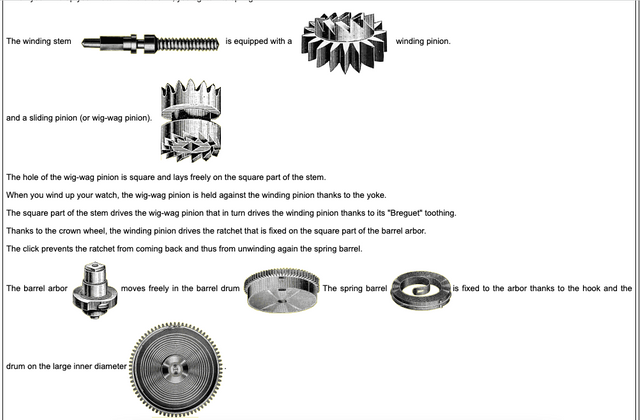
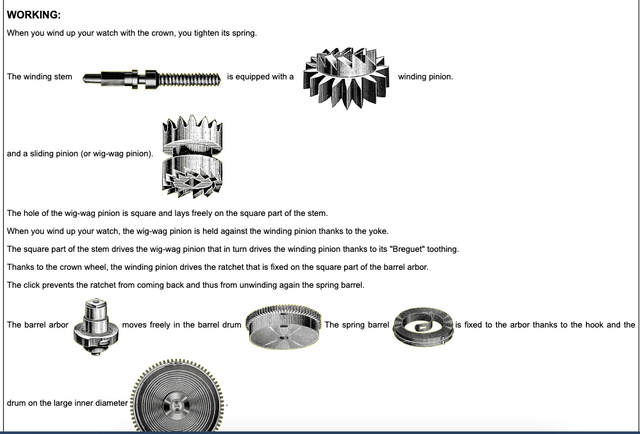

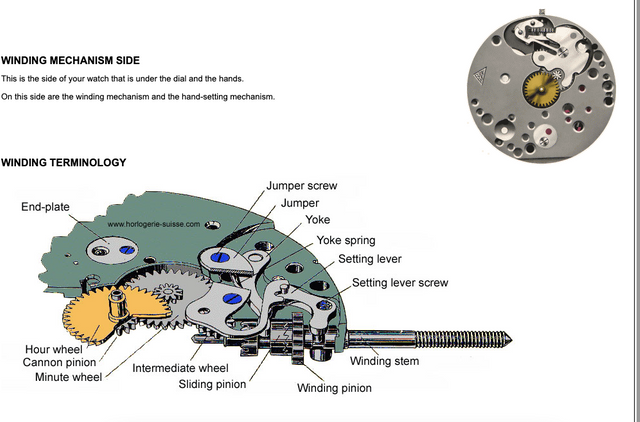
The hand-setting: When you pull the winding stem in order to regulate your watch, the setting lever, thanks to its stud that enters into the recess of the stem, is set in motion. This movement of the setting lever pushes the yoke forward.
In consequence, the sliding pinion engages with the intermediate wheel.
Then, the intermediate wheel engages with the minute wheel that in turn engages with the cannon-pinion, that holds the minute hand, and with the hour wheel, that holds the hour hand.
In the meanwhile, the winding pinion is free and cannot engage the crown wheel because the sliding pinion and the winding pinion are no longer in contact with one another.
No Battery Microchip or Circuitry.
How a Mechanical Watch Works
The pulse of the watch occurs from the ticking or
the jewels of the pallet fork hitting the escape wheel.
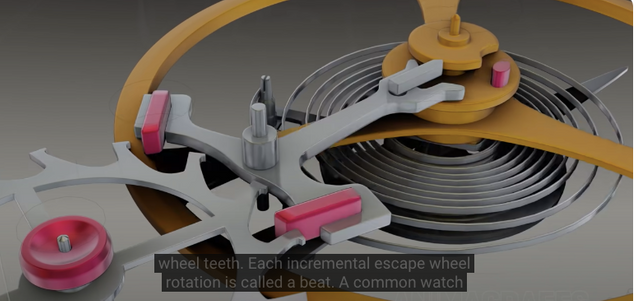
A common pulse beat rate is 21, 600 beats per hour
which is 6 beats per second.
Metal plates are the supporting structure for the watch internals.
Back to the history with the early spring-driven clocks being much less accurate than weight-driven clocks.
This meant that early spring-driven clocks slowed down over their running period as the mainspring unwound, causing inaccurate timekeeping. This problem is called lack of isochronism.
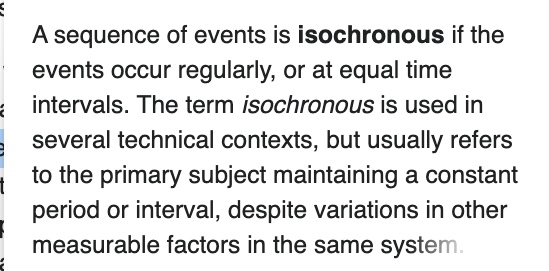
The aim is #Synchronicity!
Two solutions to this problem appeared with the first spring driven clocks; the stackfreed and the fusee.
The stackfreed, a crude cam compensator, added a lot of friction and was abandoned after less than a century.[8] The fusee was a much more lasting idea.
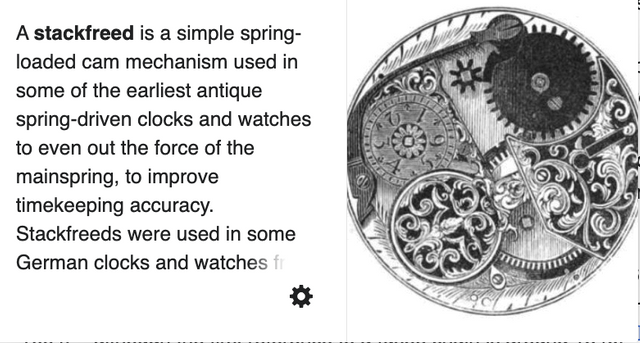
As the movement ran, the tapering shape of the fusee pulley continuously changed the mechanical advantage of the pull from the mainspring, compensating for the diminishing spring force.
Clockmakers apparently empirically discovered the correct shape for the fusee, which is not a simple cone but a hyperboloid.
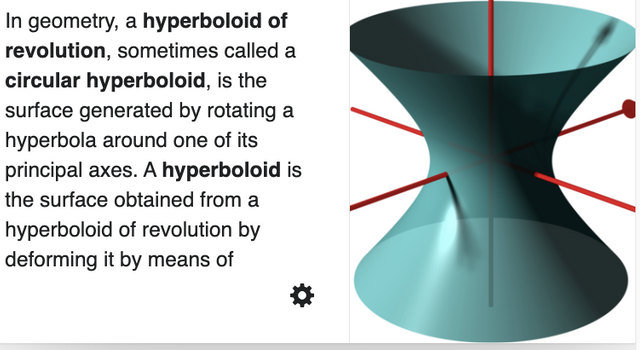
A hyperboloid is the surface obtained from a hyperboloid of revolution by deforming it by means of directional scalings, or more generally, of an affine transformation.
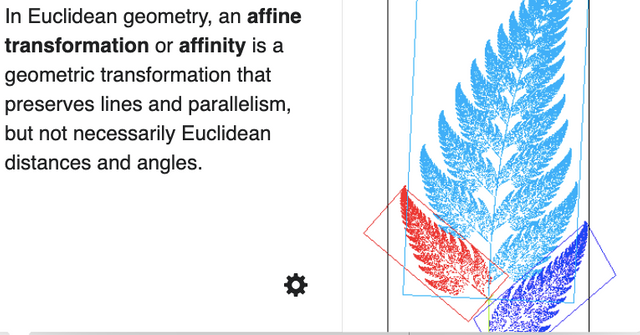
The first fusees were long and slender, but later ones have a more squat compact shape. Fusees became the standard method of getting constant force from a mainspring, used in most spring-wound clocks, and watches when they appeared in the 17th century.
Around 1726 John Harrison added the maintaining power spring to the fusee to keep marine chronometers running during winding, and this was generally adopted.
The mainspring is coiled around a stationary axle (arbor), inside a cylindrical box, the barrel. The force of the spring turns the barrel. In a fusee clock, the barrel turns the fusee by pulling on the chain, and the fusee turns the clock's gears.
When the mainspring is wound up (Fig. 1), all the chain is wrapped around the fusee from bottom to top, and the end going to the barrel comes off the narrow top end of the fusee. So the strong pull of the wound up mainspring is applied to the small end of the fusee, and the torque on the fusee is reduced by the small lever arm of the fusee radius.
As the clock runs, the chain is unwound from the fusee from top to bottom and wound on the barrel.
As the mainspring runs down (Fig. 2), more of the chain is wrapped on the barrel, and the chain going to the barrel comes off the wide bottom grooves of the fusee. Then the weakened pull of the mainspring is applied to the larger radius of the bottom of the fusee. The greater turning moment provided by the larger radius at the fusee compensates for the weaker force of the spring, keeping the drive torque constant.
To wind the clock up again, a key is fitted to the protruding squared off axle (winding arbor) of the fusee and the fusee is turned. The pull of the fusee unwinds the chain off the barrel and back onto the fusee, turning the barrel and winding the mainspring. The presence of the fusee means that the force required to wind up the mainspring is constant; it does not increase as the mainspring tightens.
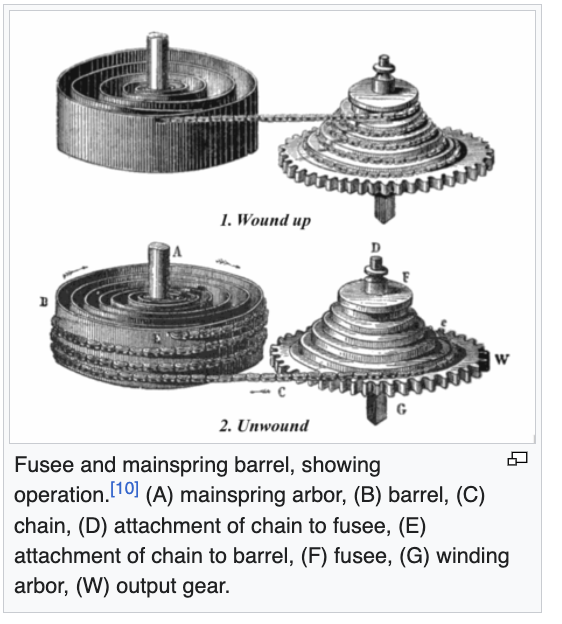
Interesting?
You decide!
The World Just Changed & Most Missed It! [Major End-Time Event]
Is something being fomented by those who wish to control?
Do YOU HAVE to allow them to control you?
No you don't.
You can make A DIFFERENT Choice and Not Participate!
Is there a #ClimateAgenda with a False Front?
You decide!
Are you told Do Not Fear?
What does Fear produce?
Check it out from my Rumble Channel on TestingTheNarrative
CBS Speaks on Controlling the Weather with a Physicist. How about these Weather Mod places?
Coleman Weather Channel Founder states Climate Change is baloney on CNN! Hear him stand up to them!
Are they lying, manipulating and putting on a SHOW?
7 years
70 mandates coming from King Charles
do they seek to control every move you make?
7,000 Children
70,000 people at #COP28
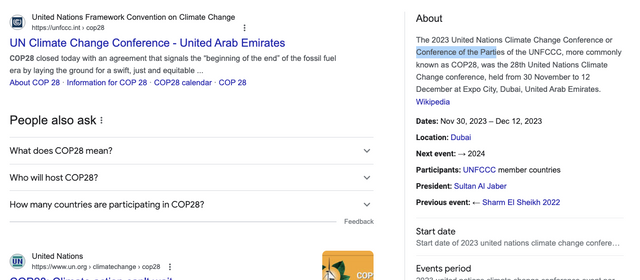
On 3.31.2023
UK and Israel signed a 7 year agreement as a road map to
a living document
for bilateral cooperation
- Partnership
- Antisemitism
- Defense and Security for the state of Israel
- Trade and Investment for the state of Israel
- Cyber Security
- Science, Innovation and Technology
- Climate [a push and agenda to run a con? You decide!]
- Health [Control Health through the push of Fear or FUD Fear, Uncertainty and Doubt]
- Culture
- Education
- Development
- Gender Equality

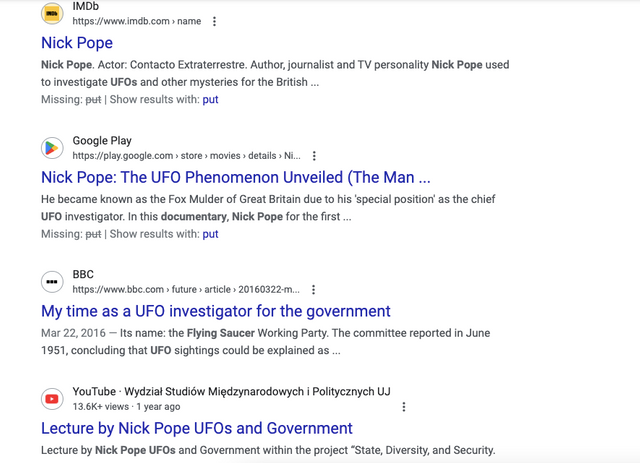
The King Of UFOS - trailer
12 days before the confirming of Cop28?
11.12.2023
King Charles Christmas Address pre-recorded?
Delivered 12 Das before Christmas?
5 Golden Rings?
According to Mental Floss. . .
Pipers piping? Geese-a-laying? Five gooolden rings? And a partridge ... in a pear tree? What in the name of yule logs is “The Twelve Days of Christmas“ all about? The short answer, it turns out, is that many people have asked that question, and there are nearly as many answers. Here are 12 facts about the song as you gear up for the 12 days (which kick off on Christmas and run through January 6) themselves.
- Lots of people insist the song is Catholic catechism ...
The story goes that from the 16th to the 18th century, when being a Catholic was illegal in Protestant England, children would sing this song to learn their forbidden faith. The partridge and the pear tree was Jesus Christ, the four calling birds were the four gospels, the pipers piping were the 11 faithful apostles, and so on.
Though where “The Twelve Days of Christmas” came from isn’t clear, it shows up in Mirth Without Mischief, which was published around 1780, and James Orchard Halliwell’s The Nursery Rhymes of England, which was published in 1842. Edward Phinney, then a professor of classics at the University of Massachusetts, Amherst, told the Los Angeles Times that the song “was first published in 1868 in a book of Christmas songs in England, but it’s probably been around a lot longer than that.”
Did it start as a Children's Game?
One theory is that it was probably “a memory and forfeit game for twelfth night celebrations which would have been said and not sung,” as Reverend Mark Lawson Jones writes in Why Was the Partridge in the Pear Tree?: A History of Christmas Carols. “The players gathered in a circle and the leader would recite a verse and each would repeat it, the leader would add another verse, and speak faster, and so on until a mistake was made by one of the players, who would then drop out of the game.”
In some retellings, the game worked a little more like Spin the Bottle: If a kid messed up, he owed someone a kiss. In either case, the goal was to count all the way up to 12 and back down without stumbling, forgetting a lyric, or getting your tongue twisted up on any of the sinuous bits, like “seven swans a-swimming.”
No Calling birds, but rather canary's and mockingbirds?
Well THAT's interesting isn't it?
There’s no such thing as “calling birds,” so it makes sense that previous versions of the song’s lyrics mention “four canary birds” and “four mockingbirds”; before that, they show up as “colly birds” or “collie birds,” which is the archaic term for blackbirds. (More on “calling birds” in a bit.)
Check out
I did an article and some posts years ago related to this, but the controllers on many platforms removed the info because they didn't want the others not awakened to Know!
https://www.smithsonianmag.com/smart-news/story-real-canary-coal-mine-180961570/
Also check out~
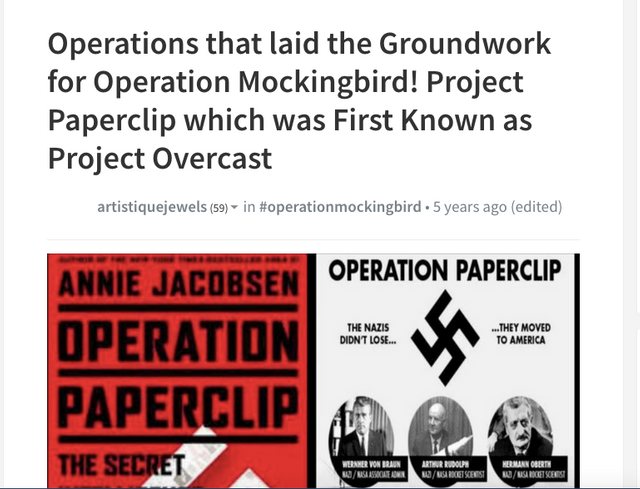
From my Steemit articles I wrote years ago,
https://steemit.com/operationmockingbird/@artistiquejewels/operations-that-laid-the-groundwork-for-operation-mockingbird-project-paperclip-which-was-first-known-as-project-overcast
There have been Many renditions of the 12 Days of Christmas.
Check The Office clip,
Quietdrive - Time After Time
Time after Time - Cyndi Lauper (Vadé A Cappella Cover)
Time After Time - Jonah Baker ft. Music Travel Love (Cyndi Lauper Cover)
Time After Time (Cyndi Lauper) - Sam Tsui & Casey Breves | Sam Tsui
Is all that is happening on a global stage connected to the crown Also connected to the Confirming of a Covenant?
If so WHOSE Covenant?
When was the First Dr. Who Aired?

The first episode of Doctor Who was aired on 23 November 1963. The cover of the Radio Times that week announced "a new Saturday-afternoon television series of adventures in time and space". Viewers heard the ominous theme tune - written by Ron Grainer in the BBC Radiophonic Workshop and arranged by Delia Derbyshire - and saw the title sequence designed by Bernard Lodge.
In 'An Unearthly Child', Jacqueline Hill and William Russell play teachers who are intrigued by their pupil Susan Foreman, played by Carole Anne Ford. They follow her home to an old junk yard and - in a revelation that took the audience into the realm of science fiction - are surprised to discover that the police box in which she lives has a bright futuristic interior, much bigger inside than out.
See the Full Episode here,
Susan's grandfather is the Doctor, played by William Hartnell. Alarmed that the teachers will reveal the secret that he and Susan are time travellers, the Doctor kidnaps them. The final shot shows the TARDIS in a barren landscape as a human shadow falls across it, setting the scene for future adventures.
Doctor Who ran until 1989, with a television film in 1996. However its lasting popularity ensured its return in 2005, and that it played a large part in the revitalisation of Saturday evening family viewing.
According to Wired,
Because the show was originally intended for children, the creators cast an appealing, sympathetic actress, Carol Ann Ford, as The Doctor’s teenage granddaughter, Susan. When Ian Chesterton (William Russell) and Barbara Wright (Jacqueline Hill), two of Susan’s teachers, become concerned over the girl’s bizarre behavior, they stumble across The Doctor and Tardis. Once exposed, The Doctor insists on taking the two earthlings with him into time and space.
But, a very real tragedy almost swept the show aside before any audience found it. The assassination of U.S. President John F. Kennedy on Nov. 22 dominated the news and public consciousness that weekend, obviously pushing the premiere of a new TV series off the British TV radar.
BBC program planners decided to re-air the original premiere a week later, along with the series’ second episode. Doctor Who’s first storyline featured time travel back to caveman times and attracted a lukewarm public and critical reaction.
But, the show’s second complete story – a sci-fi piece kicking off with “The Dead Planet" – featured a voyage to the home planet of the Daleks. The metallic monsters became an overnight sensation and established Doctor Who as a British institution.
Timey Wimey, Wibbly Wobbly, Topsy Turvy. Recent Solar Flares, UAP's Dr. Who first aired 11.23.1963
The three specials began airing on 25 November 2023 and concluded on 9 December 2023, marking Doctor Who's 60th anniversary.
Go at the speed of GOD TIME!
Hebrews 13:8 Jesus Christ the same yesterday, and to day, and for ever.
What IF you could literally Transcend Time?
God is a FREQUENCY!
Tune in to the Universe INSIDE of you!
As was promised~
Romans 8:38-39
King James Version
38 For I am persuaded, that neither death, nor life, nor angels, nor principalities, nor powers, nor things present, nor things to come,
39 Nor height, nor depth, nor any other creature, shall be able to separate us from the love of God, which is in Christ Jesus our Lord.
THINK about it. . .
What is the 3d realm after all?
What happens when you give a triangle [3d] DIMENSION?
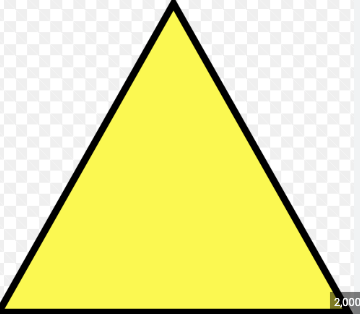
It becomes a Pyramid. . .in other words 5d!

What causes what appears as magic?
SOUND/Frequency/Vibration
Who created it after all?
God, that's who!
NOTE, it's an 11 encodes 1. . .#TheOne
John 1:1
King James Version
1 In the beginning was the WORD, and the Word was with God, and the Word was God.
Don't miss it like most churches do~ the WORD, was God.
ALL was SPOKEN into existence!
Sound IS Vibration and Frequency!
Transcend, Ascend and
Go with GODSPEED into the next dimension!
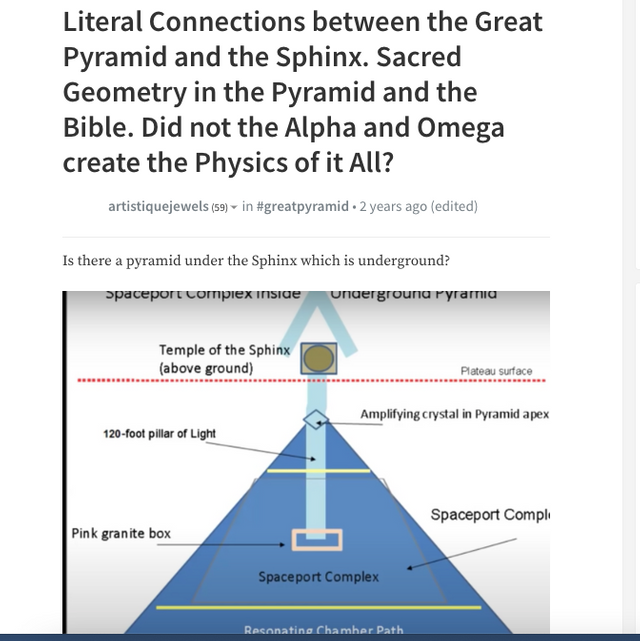
#Time, #MechanicalWatches, #Fusee, #Linear, #Quantum, #SacredGeometry, #SpaceAndTime, #TimeContinuum, #TimeAfterTime, #TranscendTime, #DrWho, #TimeLord, #Synchronicity
Sources and Connecting articles with research, full sources

OFFICIAL TRAILER | Doctor Who 60th Anniversary Specials | Doctor Who
https://archive.horlogerie-suisse.com/Theoriehorlogerie/fonction-anglais.html
Are there Wrinkles in Space Time? What is the Devil's Graveyard? Why were they called Vile Vortices? The ancients knowledge of the net and the Jewel of Netra Indra!
Concerning what happened off the coast of Mayotte on 11.11.2018
WHEN EARTH RANG LIKE A BELL INITIATING OFF MAYOTTE COAST ON 11.11.2018. BRITTANY SPEARS ABUSIVE?
https://www.bitchute.com/video/kU00EMd0ZXxm/
With parallel to the above and this article,
Another case with the presence of prisms of quartz crystals is the Dembeni site, on Mayotte Island in East Africa, dated between the ninth and twelfth. . .
Sociocultural Interaction and Symbolism in Prehistoric South America: Quartz Crystal Manuports from Tierra del Fuego
#Argentina, #Mayotte
Specifically, in the Great Island of Tierra del Fuego, quartz is a raw material that is widely distributed. Its ubiquity, accessibility, and effectiveness to make usable edges can explain its presence in several archeological sites on the island.
Generally, it is milky quartz that appears in the landscape like a boulder of various sizes (from 3 to 15 cm) or in veins within the Yaghan Formation (of the lower Cretaceous) (i.e., in [58]). For lithic production activity, it can be exploited using various knapping techniques. However, in the region a type of exploitation has been identified that appears on a recurring basis. This is the selection of quartz pebbles that are opened using bipolar percussion technique, which produces elongated flakes or hemi-pebbles.
https://www.intechopen.com/chapters/70827
Downvoting a post can decrease pending rewards and make it less visible. Common reasons:
Submit